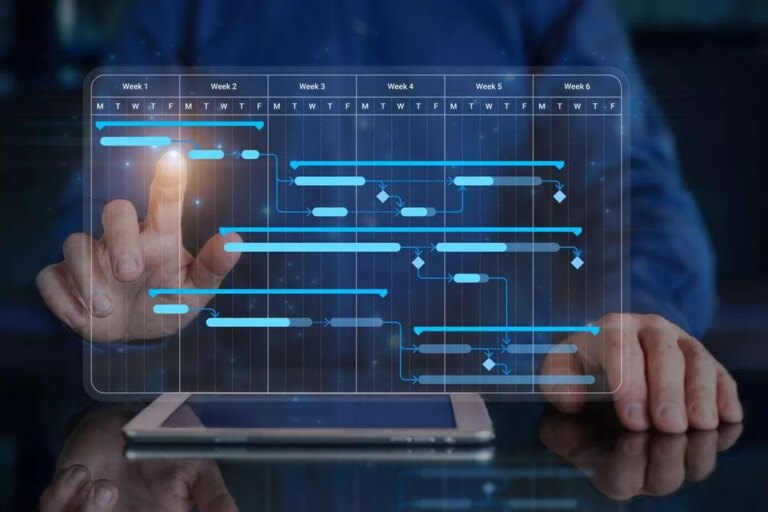Learn what the seven stages of SDLC are and how they help developers bring new software products to life. The waterfall model arranges all the phases sequentially so that each new phase depends on the outcome of the previous phase. Conceptually, the design flows from one phase down to the next, like that of a waterfall. During this step, current priorities that would be affected and how they should be handled are considered.

Microservices architecture, for example, makes it easy to toggle features on and off. A canary release (to a limited number of users) may be utilized if necessary. Once the product is ready to go, it’s time to make it available to its end users and deploy it to the production environment. For example, if you strive to build software designed for hourly employees, as Zoomshift has done, or time tracking software, you would start at the “requirement analysis” stage. SDLC provides a number of advantages to development teams that implement it correctly. Theoretically, this model helps teams to address small issues as they arise rather than missing them until later, more complex stages of a project.
Stages and Best Practices
This high-level description is then broken down into the components and modules which can be analyzed, designed, and constructed separately and integrated to accomplish the business goal. SDLC and SAD are cornerstones of full life cycle product and system planning. Hence, the Agile SDLC model has recently become increasingly popular and in demand. This demand can be primarily linked to the agile model’s flexibility and core principles. By its core principles, we mean adaptability, customer involvement, lean development, teamwork, time, sustainability, and testing, with its two primary elements being teamwork and time (faster delivery). So rather than creating a timeline for the project, agile breaks the project into individual deliverable ‘time-boxed’ pieces called sprints.
- The agile model is relatively well-known, particularly in the software development industry.
- Improve chances of on-time, on-budget completion as users update in real-time, avoiding surprises during development.
- In the planning stage, the team discusses what can go wrong during the development process and derive solutions.
- Theoretically, this model helps teams to address small issues as they arise rather than missing them until later, more complex stages of a project.
- Before choosing a language, you need to know what you want to code, but simple front-end development languages like JavaScript, HTML, and CSS are good places to start.
- Plus, you need to create an architecture that can hold all the requirements in a way that would work for them.
With proper management and clear goals in place, however, these issues can be minimized, and the advantages of this methodology can be fully realized. Derived from the Waterfall model, V-model is also called the Verification and Validation model for the SDLC process. Moreover, the V-model is characterized by a corresponding testing phase for every development stage. In a V-shaped model, every new step starts only after completing the previous one. Big bang is the simplest model in the SDLC that does not follow any specific process and requires minimal time for planning.
Implementation Phase
At the completion of this phase you are able to ensure that what you have built works. You can’t produce a final version of a product without eating your own “dog food”. This is the build phase in which you seek not to answer example of system development life cycle questions but to produce outputs. Much like planning for a vacation, you need to get your possessions organized and think about what bags to pack. Think about what you want to build and where your technology passions are.

SDLC works by lowering the cost of software development while simultaneously improving quality and shortening production time. SDLC achieves these apparently divergent goals by following a plan that removes the typical pitfalls of software development projects. Regardless of the process implemented and the tools used, all require the crucial element of documentation to support findings, close iterative phases, and to analyze success.
Planning Stage – What Are the Existing Problems?
An expert like Simform helps you develop a clearly defined plan to achieve this goal. Simform offers advanced services that you can integrate into your SDLC to build products much faster. The Software Development Life Cycle is a systematic process to ensure end-product quality. Adhering to an appropriate and secure SDLC is essential for any project’s success.
The agile model is both iterative and incremental, making it more efficient than other process models. Systems analysis and design (SAD) can be considered a meta-development activity, which serves to set the stage and bound the problem. SAD interacts with distributed enterprise architecture, enterprise I.T.
The SDLC Phases
Modular design reduces complexity and allows the outputs to describe the system as a collection of subsystems. An output artifact does not need to be completely defined to serve as input of object-oriented design; analysis and design may occur in parallel. In practice the results of one activity can feed the other in an iterative process.
Today’s increasing demand for data and information security also factor into the overall planning, training, testing, and deployment of a system. The iterative and phased stages of an SDLC benefit from the leadership of a dedicated project manager. The major goal of an SDLC is to provide cost effective and appropriate enhancements or changes to the information system that meet overall corporate goals.
Software Development Life Cycle Guide With Examples
The system development life cycle (SDLC) is a complex project management model that encompasses system or software creation from its initial idea to its finalized deployment and maintenance. In this stage, the problem or pain the software targets is clearly defined. First, developers and other team members outline objectives for the system and draw a rough plan of how the system will work. Then, they may make use of predictive analysis and AI simulation tools at this stage to test the early-stage validity of an idea. This analysis helps project managers build a picture of the long-term resources required to develop a solution, potential market uptake, and which obstacles might arise.

After you have decided on which project to go forward with and signed the agreement, the next phase is initiating it. This is when the entire software development life cycle starts, and you have to figure out the project goal. In the information systems domain, the terms SDLC and system life cycle are often used interchangeably. It has been suggested that information SDLC should not be confused with system (the delivered product) life cycle. The system life cycle begins when the SDLC delivers the final product, that is, when the implementation phase begins.
What is system development life cycle security?
The software development lifecycle (SDLC) methodology provides a systematic management framework with specific deliverables at every stage of the software development process. As a result, all stakeholders agree on software development goals and requirements upfront and also have a plan to achieve those goals. Finally, Agile software development methodology has also shifted to embrace DevOps principles. This includes using automated pipelines and other tools that allow teams to quickly deploy changes into production environments with minimal effort and risk. DevOps also enables developers to develop and execute code faster by removing manual steps.

